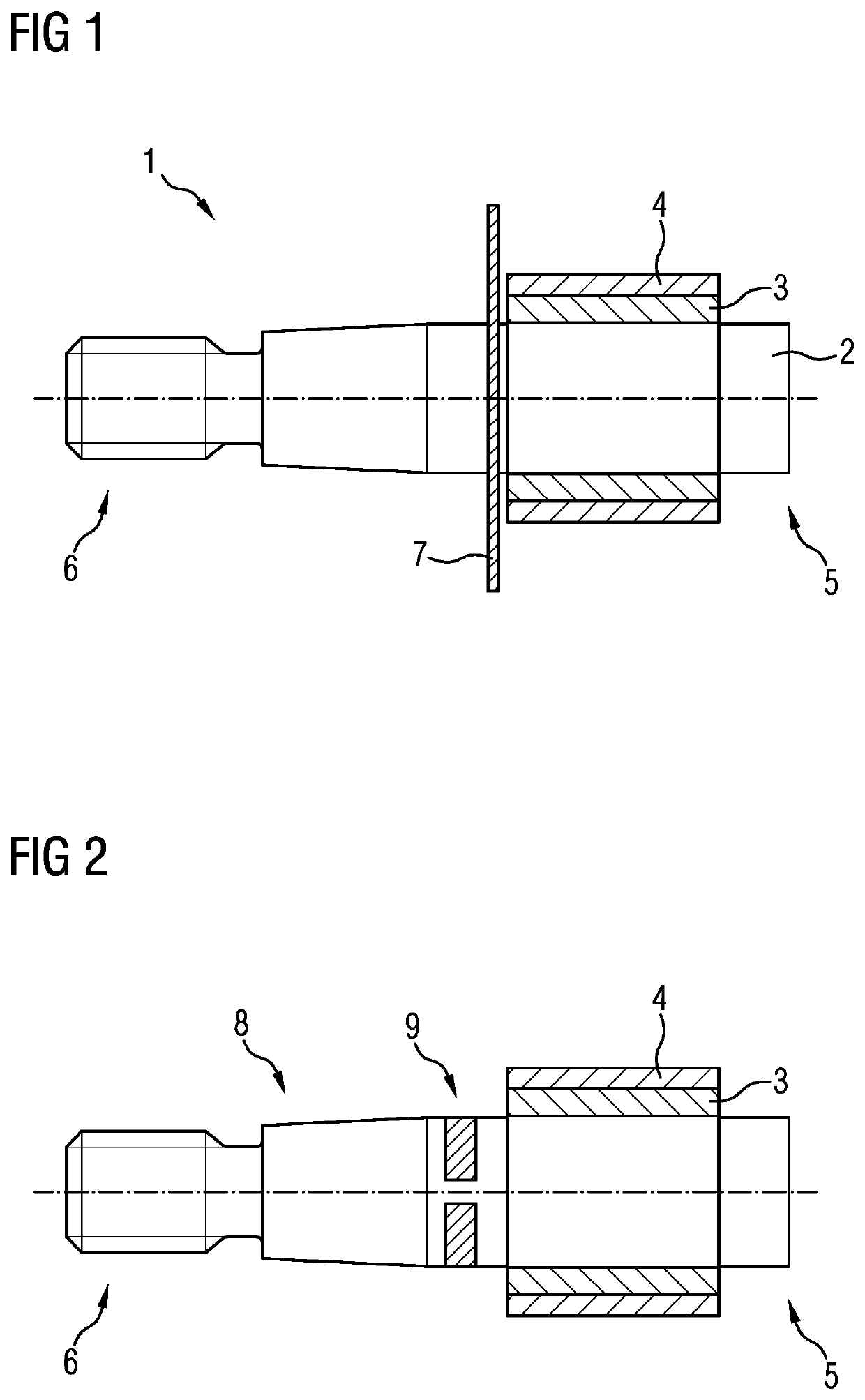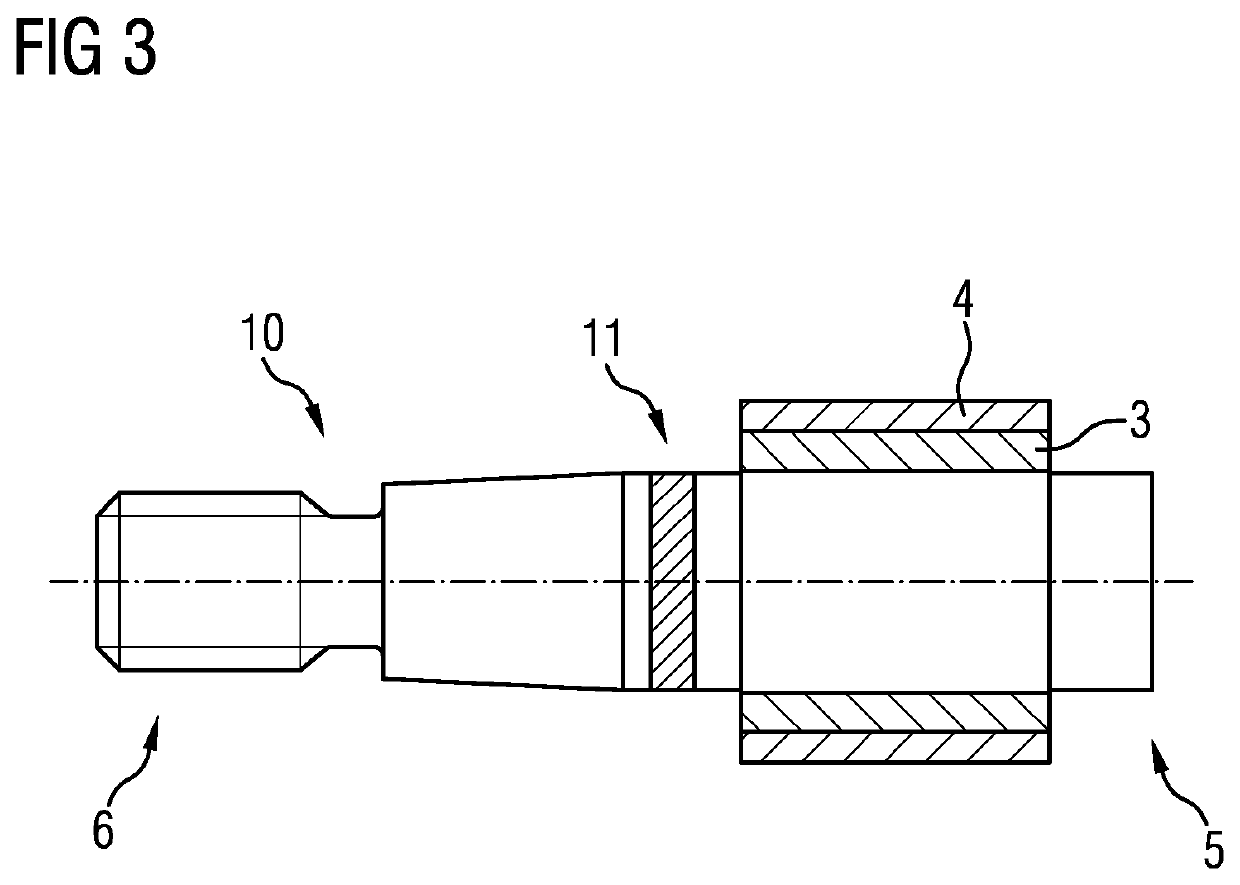Electrical current feed-through
a current feed-through and electric current technology, applied in the field of current feed-through, can solve the problems of damage to the insulation of the electrical feed-through, high thermal load in the outer region of the current feed-through, etc., and achieve the effect of reducing heat conduction, reducing specific resistance, and not compromising electrical conductivity on the whol
- Summary
- Abstract
- Description
- Claims
- Application Information
AI Technical Summary
Benefits of technology
Problems solved by technology
Method used
Image
Examples
Embodiment Construction
[0029]The following description of the preferred embodiment(s) is merely exemplary in nature and is in no way intended to limit the invention, its application, or uses.
[0030]FIG. 1 shows a current feed-through 1. This is formed from an electrically conductive pin 2, which is surrounded at least in some portions by an electrically non-conductive insulation layer 3. In the region of the insulation layer 3 there is additionally arranged a metallic sleeve 4, in which the electrically conductive pin 2 and the insulation layer 3 are received.
[0031]The right-hand end 5 of the pin 2 forms what is known as the hot end, which protrudes into the catalytic converter (not shown) and is in electrically conductive contact with the electrical conductor in the catalytic converter. The left end 6 forms what is known as the cold end, which forms the contact region outside the catalytic converter.
[0032]Furthermore, the heat shield 7 is seen, which is arranged on the side of the metal sleeve 4 and the i...
PUM
 Login to View More
Login to View More Abstract
Description
Claims
Application Information
 Login to View More
Login to View More - R&D
- Intellectual Property
- Life Sciences
- Materials
- Tech Scout
- Unparalleled Data Quality
- Higher Quality Content
- 60% Fewer Hallucinations
Browse by: Latest US Patents, China's latest patents, Technical Efficacy Thesaurus, Application Domain, Technology Topic, Popular Technical Reports.
© 2025 PatSnap. All rights reserved.Legal|Privacy policy|Modern Slavery Act Transparency Statement|Sitemap|About US| Contact US: help@patsnap.com


